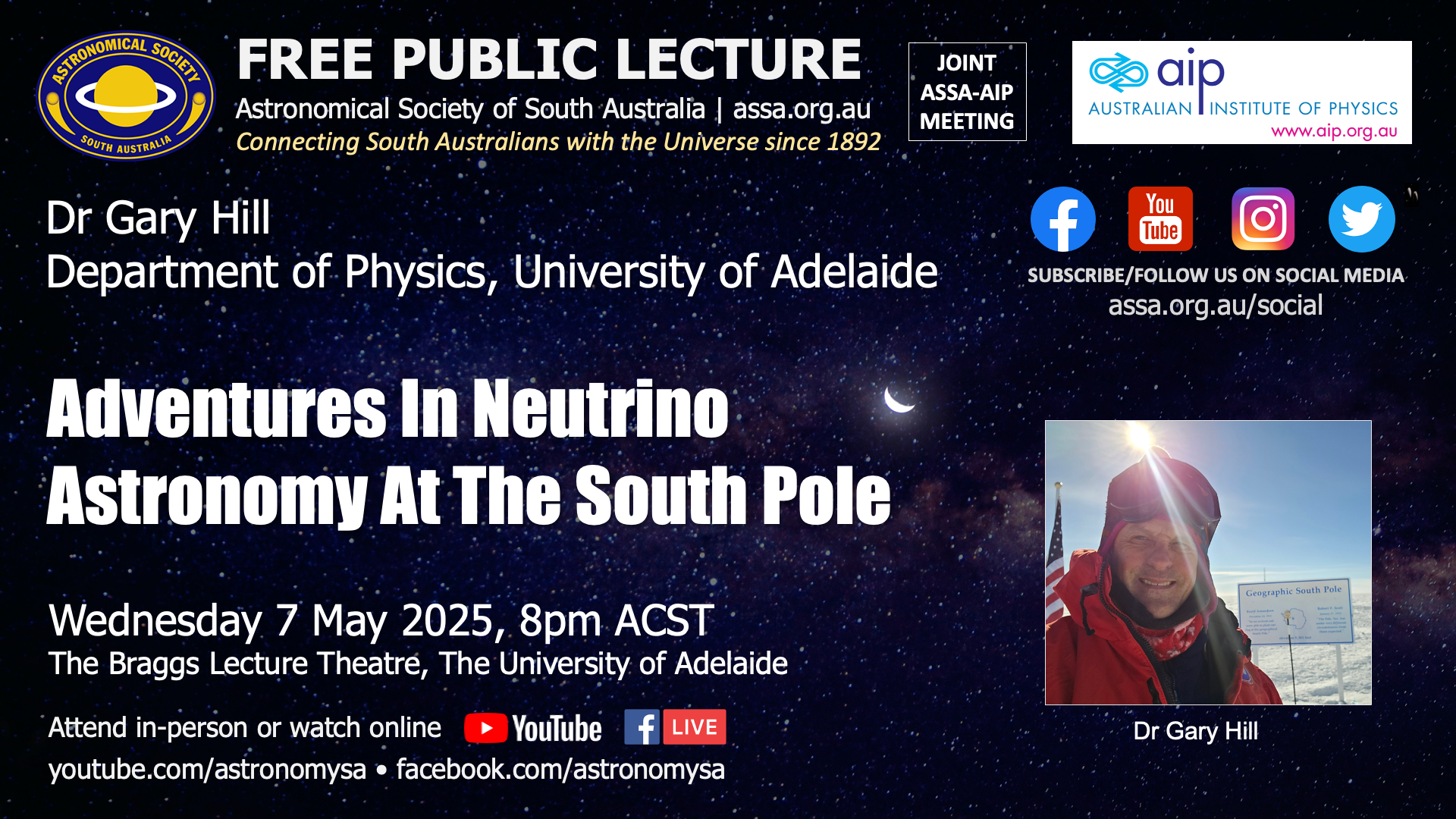General Meeting: May 2025

ASSA monthly meetings are held in-person and are open to the general public.
Come see this live as it will not be possible to live stream tonight's meeting.
Attend In-Person: This is a free public event. A theatre ticket is NOT required for this meeting. Just roll up.
Finding the Venue: The Braggs LT entrance faces the Barr Smith Lawns and is located at E10 on the map.
Watch Live Online: (no ticket required): YouTube or Facebook. Please Subscribe to the ASSA YouTube channel and turn ON Notifications to be instantly notified of our live broadcasts.
Meeting Agenda:
- Adventures in neutrino astronomy at the South Pole
- General Meeting
- Announcements & Upcoming Events
- Close at 9:30pm
Speaker: Dr Gary Hill
Abstract: The IceCube Neutrino Observatory at the South Pole has been fully operational for over a decade. With a cubic kilometre of deep ice as the detection volume, the detector has seen thousands of astrophysical neutrinos from across the sky. Initially, these were observed as an unresolved diffuse flux, but with recent improvements in event selection and reconstruction the first distinct sources are starting to emerge - the nearby AGN NGC1068 has been revealed as the first steady emitter of high-energy neutrinos. In this talk we will learn how IceCube was constructed in the deep ice, how neutrinos are detected and data analysed to reveal the sources. In addition to the steady source NGC1068, IceCube has revealed that our own galaxy is a source of high energy neutrinos, likely from populations of as-yet unresolved particle acceleration environments in the galactic plane. We will also discuss results in various areas of particle physics that are accessible with the astrophysical neutrinos and the even greater flux of background atmospheric neutrinos, and outline plans for the future expansion of the detector into IceCube-Gen2 – which would more than double the number of strings in the ice, and vastly expand the detection volume.
Bio: Gary Hill completed a PhD at the University of Adelaide in 1996, and then spent 13 months at the South Pole building and operating the AMANDA detector. He then spent 14 years at the University of Wisconsin-Madison working on AMANDA and then IceCube. After 12 trips to the south pole, he moved back to Adelaide to join the University of Adelaide Department of Physics, where he continued IceCube neutrino research. After a long break, he returned to the pole last summer to work on preparing the drilling system for the “IceCube-Upgrade” strings to be installed this coming summer season, which will be his 14th visit to the bottom of the world.
Event info
Wednesday 07 May 2025
8:00 PM - 9:30 PM
The Braggs Lecture Theatre (University of Adelaide) and Online